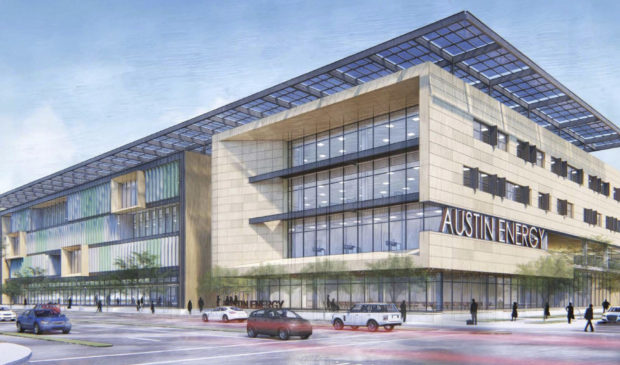Audit: City-owned facilities set to save Austin $330M in 30 years
Thursday, November 7, 2019 by
Jessi Devenyns As the city faces a 3.5 percent tax cap beginning next year, city departments are searching for ways to save their pennies. Staff members have found one such savings opportunity by working to get city employees into city-owned buildings rather than leasing office space.
Right now, the city leases 781,000 square feet of office space with an annual price tag of $22.8 million. According to a new audit from the city, if 300,000 square feet of that administrative office space was converted to a building owned by the city, it would save Austin $331 million.
Already the city is working to convert some currently leased space into owned space by constructing two buildings to house Planning and Development and Austin Energy. The Austin Energy building is scheduled to open in 2021 and the Planning and Development Center in May 2020.
“That project is actually about a month ahead of schedule and we’re tracking on budget,” Greg Canally, Austin’s deputy chief financial officer, told the Audit and Finance Committee at its Oct. 23 meeting. “Our expectation is to come in slightly under budget on the project.”
When the two new city buildings are opened, they will add 540,000 square feet of owned office space to the city goal of increasing its owned office space by 1.2 million square feet by 2026. The city’s last office lease will expire that same year.
Adding 1.2 million square feet would bring city-owned square footage up to 2.4 million.
Council Member Jimmy Flannigan encouraged staff to look at building something even bigger than 1.2 million feet of space. He pointed out that extra space could be a potential source of revenue for the city if underused floors were leased out or city-funded contracts with nonprofits provided office space on city property, thereby saving on any funds that would be allocated to renting.
According to Canally, the city is currently leasing space that is underutilized, yet the city is contractually obligated to pay for it and does not have the flexibility to adapt the space to its current needs.
With the opening of the city’s two new buildings, four others are planned to be shut down, including the Municipal Building, APD headquarters, 411 Chicon, and the Parks and Recreation Department annex. The buildings are not going to be sold by the city but will instead be used as sites that could potentially bring the city revenue.
Beyond providing modernized office facilities to employees, city-owned property has a significant advantage over leasing.
Leased space is paid for out of departmental operating budgets, which are funded through the General Fund that is subject to the tax cap taking effect in Austin beginning in 2020. By transitioning to owned space, the city will move its facility expenses into debt service, which is not subject to the annual fluctuations that can be experienced by individual departments.
Committee Chair Alison Alter noted that this change is invaluable as the city looks for money to fulfill revenue obligations under caps. “(It) frees up dollars under revenue caps which we can then be using for other things, and over time, this will also save money,” she said.
The audit also looked ahead to further maximize the benefits associated with owning municipal buildings, mentioning One Texas Center, Town Lake Center and the Rutherford Lane Campus as potential sites for adaptive reuse or updates to the infrastructure.
Canally said the department expects to bring a work authorization request to Council in December to begin the next round of programming work for even more administrative office buildings for the city.
Committee members applauded the efforts to transfer city departments into city-owned facilities with Council Member Flannigan marveling at the speed with which it is being accomplished.
Chair Alter pointed out that there is significant motivation to enact these changes. “It’s the same reason you want to own your own property rather than rent. In the end, it is more cost-effective,” she said.
Photo by city of Austin/ELS Architecture: Rendering of Austin Energy’s future headquarters.
The Austin Monitor’s work is made possible by donations from the community. Though our reporting covers donors from time to time, we are careful to keep business and editorial efforts separate while maintaining transparency. A complete list of donors is available here, and our code of ethics is explained here.
You're a community leader
And we’re honored you look to us for serious, in-depth news. You know a strong community needs local and dedicated watchdog reporting. We’re here for you and that won’t change. Now will you take the powerful next step and support our nonprofit news organization?









